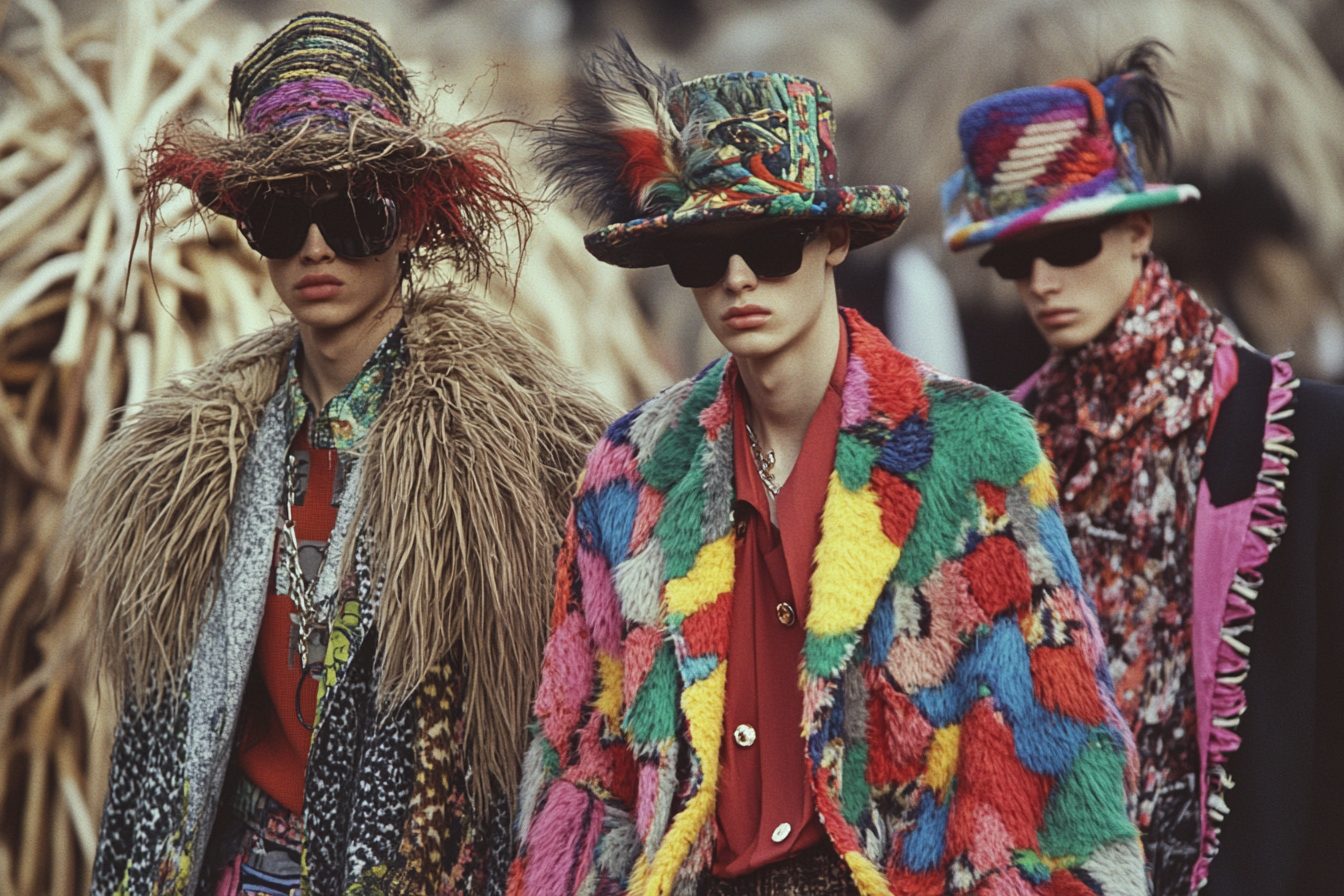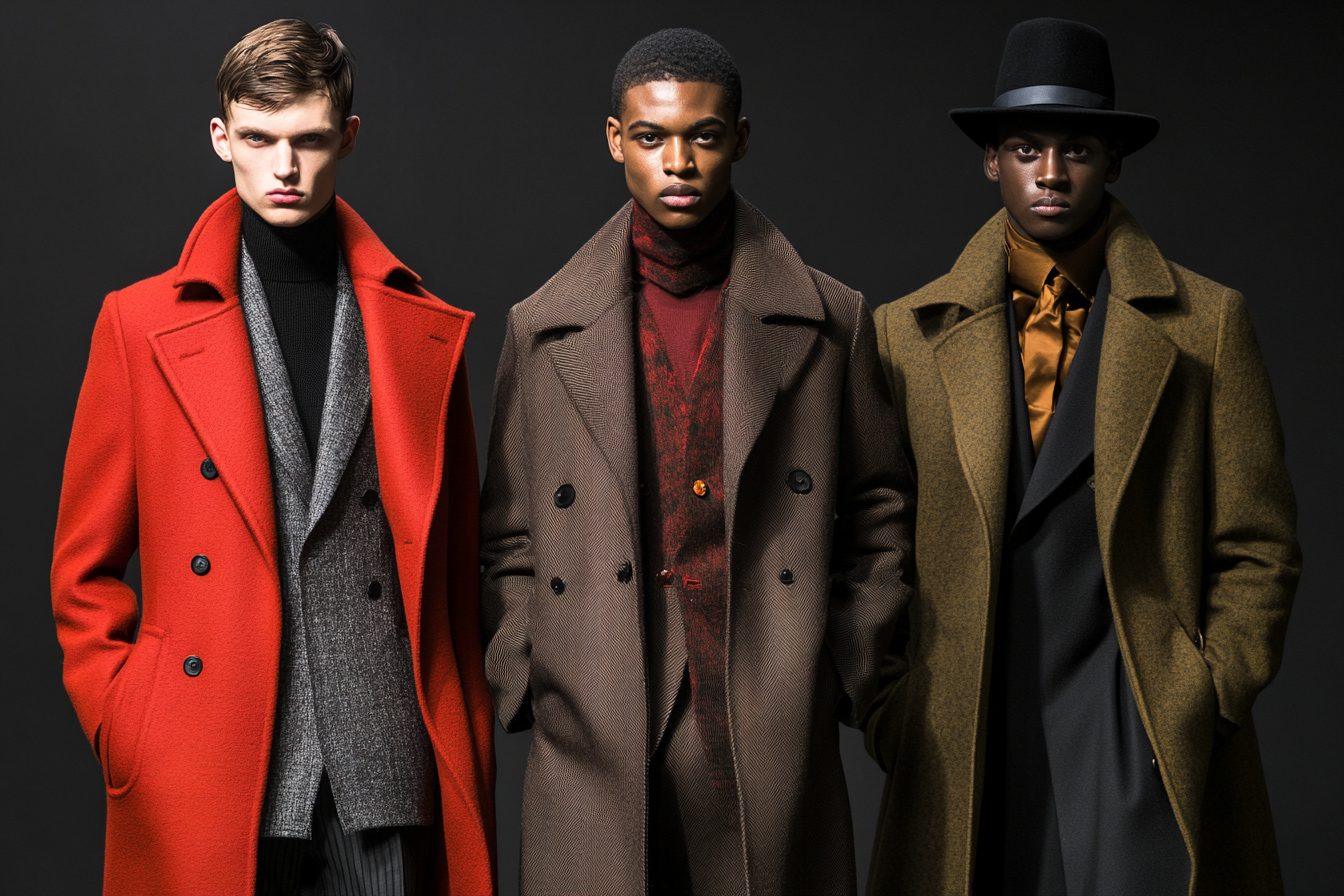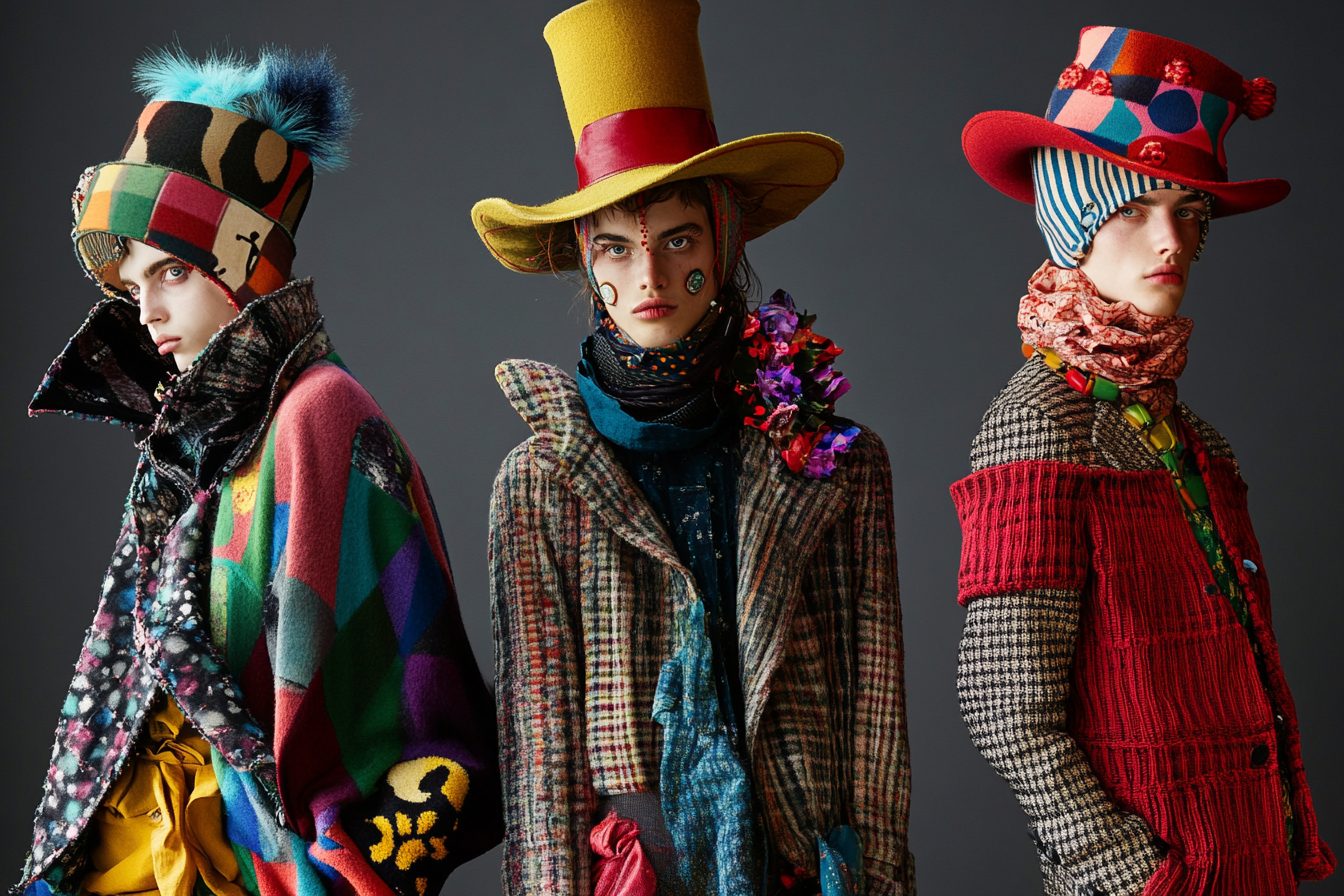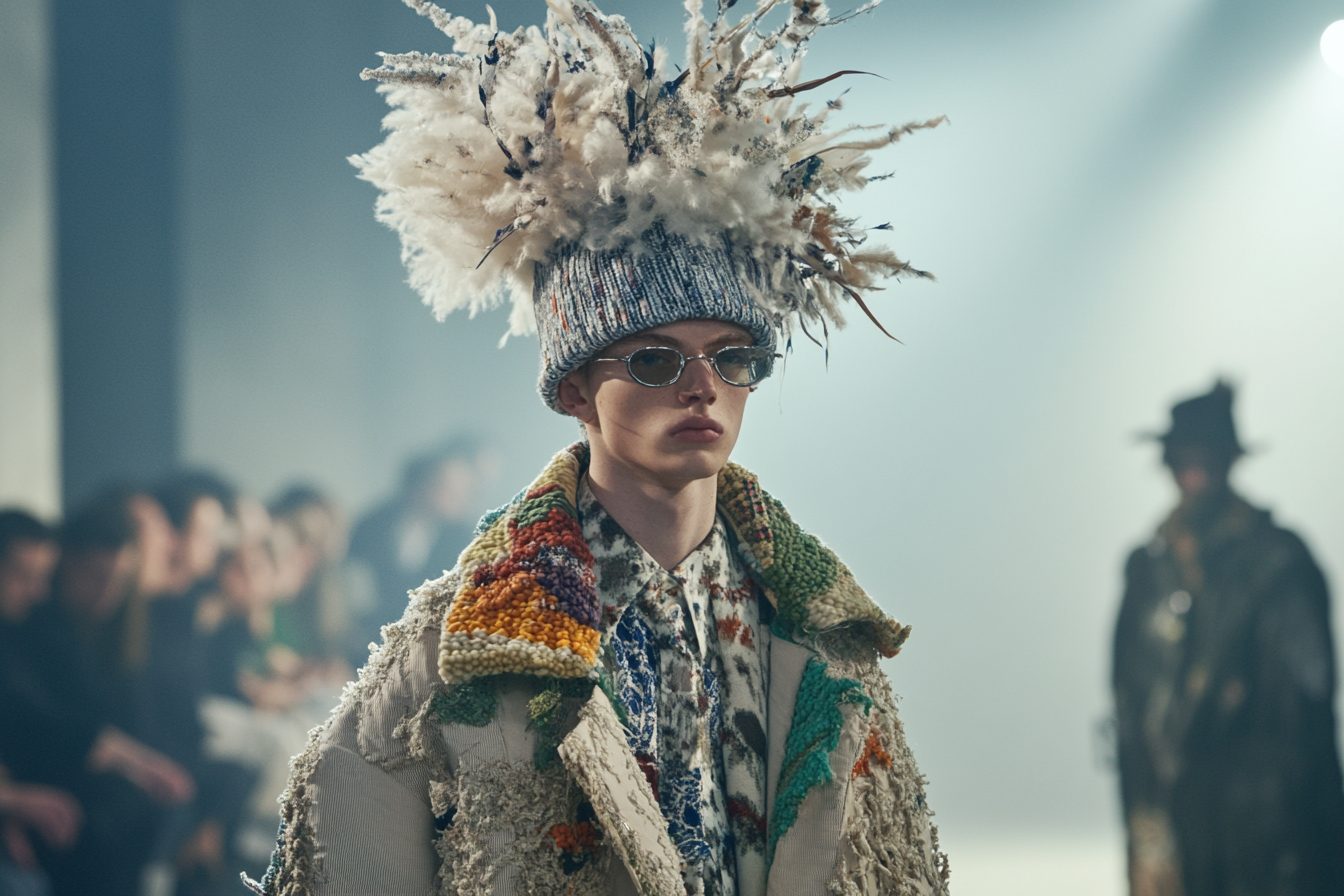Fashion has never been my strong suit. As far as I care, my closet follows the motto of, “if it fits, isn’t dirty, and doesn’t make me look like a time traveler, then I can wear it.” This has helped me live for years without being caught by the ‘fashion police.’
However, now, more than ever, I am left confused by what style actually is. It isn’t that I anticipate and appreciate every trend.
I accepted a long time ago that fashion and I are meant to be indifferent to eachother. So what confuses me, is why do so many people make modern fashion choices that are completely illogical, unflattering, and downright weird? My confusion increases after going to the ‘normal, mainstream clothing store’ my niece urged me to.
At the store, I was just looking to replace a sweater I overused, but what I got was far worse than expected. The colors, fabrics, and patterns made it seem like a a geometric abstraction exhibit was bombed by a textile factory while a human hating designer stood watching. The sweaters — if one could describe them that way — dangled on the racks like collapsed hot air balloons.
Their sleaves went beyond where any logical arm would end – the necklines seemed made for people with three heads, and there were cutouts at the most baffling locations that one would prey for during the colder months. One offering especially captivated my attention, a beige monstrosity that cost the same as my first car, for some odd reason. It looked like it had previously been worn, maybe it took part in some industrial accident and then got attacked by scissors.
“Distressed,” said the helpful sales associate when I asked if the item got damaged while shipping. “It is supposed to look like that.”
My head was nodding as though I completely understood while, in reality, I was trying to see how much money I would save by letting my clothes ruin themselves. Why pay for ‘distressed’ when time can do all the work, with the help of everyday laundry mistakes?
It’s not just the intentional shredding of useful clothing that intrigues me. It is fashion’s relationship with basic proportions. Each decade, pants seem to cycle between two extremes every ten years.
When I was a kid, pants were supposed to cover the entire leg, plus a tiny portion of the shoe. Then came pants that cropped awkwardly a few inches above the ankle like a timid swimmer who wasn’t ready to get into the water. Now, pants have given up on trying to make sense in any fashion whatsoever.
Some are so baggy they could fit a small family while others are so tight, they could be used as a detailed drawing of a body from the waist down. No pants seem to exist that rest between these two extremes, so there are also no pants that serve their main purpose of covering the legs while staying neutral on the matter of your commitment to blood circulation or being wrapped in fabric. Last month, I got dragged to a fashion show as a plus one.
For two painfully long hours, I sat and saw models walk down an elevated platform expressionlessly showcasing clothes that looked like a blend of fancy industrial waste. I remember one particular young man wearing what I thought was a deflated life raft but was later told it was a ‘deconstructed puffer jacket with asymmetrical hemline.’ A woman followed wearing three different patterns fighting for attention on her torso. The people watching seemed genuinely engaged in my presentation, occasionally saying things that I thought were compliments.
I remained quiet, trying to make sense of the basic purpose of clothing, which is to cover the body and keep it warm. Okay, maybe it is a little more complex than that, but there is no need for an artist statement accompanying every outfit. “Isn’t it wonderful?” my sitting partner asked, misunderstanding my shocked silence as awe.
“This is true,” is how I responded, and it was true. It is true in the way watching a squirrel jaywalk or someone trying to parallel park a bus is amazing—it just is. The most strangling aspect of current day fashion, however, is the logic behind the pricing.
It seems to be set on a system that is non-existent in existing economies. The greater your investment towards clothing appears, the less expensive it seems, and visca versa. Items that seem incomplete—raw edges, straps hanging off, stitches that are supposed to be hidden, and hems that look as if they were left undone—tend to have price tags that resemble smaller appliances.
A t-shirt with a logo splattered on the front, for instance, tends to sell for the same price. I am befuddled how costly products are marketed by bypassing the product’s intended value. For instance, a handbag often confused with the standard tote bags available in public libraries and conferences is imposingly priced at the cost of a monthly mortgage.
This version comes with an insignia logo that serves more as a digital NFT than a prestigious brand moniker. The impression this gives off is that it is aimed towards those snooty enough to drop out of society’s middle class and towards the upper class. After analyzing blatant consumerism for this bag, I must say it is bewildering.
The modern society’s version of the “ugly sneaker”, serves as a brilliant example of style gone wrong, begs the curious case, “What happens when orthopedic shoes meet able-bodied people wearing extravagant high-end accessories?” Although appearing twice the size of an ordinary shoe, the style is considered ‘modern’ for some odd reason. They are chunkier than a trampoline, aggressively colored and creepily designed to add five sizes to the users feet and give the illusion of being a high class individual. Tip of the spear sophistication comes with a price these individuals need to pay; it will simply transform them into a laughing stock.
Maybe the most complicated aspect of fashion is its ability to convert clothing items that were once deemed ‘embarrassing’ and transform it into ‘retro’ or ‘ironic’ without altering the look of the item. Just the same, the pattern of the shirt that was worn once and marked by people as hopelessly out of touch gets mocked for being worn out of fashion. Styles that were once the topic of ridicule are now searched for in thrift stores and sold again for greater prices marked as “authentic vintage”.
I got to experience this first hand, when my nephew happened to catch a glimpse of me wearing a plaid flannel shirt which I have owned since ‘mid 90’s’. “Hmm.. Nice shirt.
I must say though, it is very streetwear,” he said, surprisingly, with approval. I was partially baffled by the compliment, given how I was wearing the shirt during three cycles of fashion, out of fashion, and then into style once again. I presumed I was wearing this shirt while on the move.
Rather than explain that I don’t really care for a style statement, but am too lazy to toss out perfectly functional items, I just decided to go with the flow and accept the beliefs of my nephew. One thing we note as a frustrating advancement in the history of fashion is “fast fashion”. This is a method of clothing manufacture designed to be worn for a short period of time, photographed, and then discarded like a fast food wrapper.
Now there are entire companies whose purpose is solely to provide an infinite supply of clothes designed to be almost throw-away which have a lifespan that pales in comparison to that of the average house plant. Disregarding the environmental impacts, which arevery serious, there seams to be something fundamentally unsettling about garments that are deliberately manufactured with no consideration towards longevity. It is possible to recall with nostalgia the image of my grandfather who had a classic, durable, well-kept, and stylish at the same time wool coat, which he used for thirty years.
He passed away while the coat was still functional enough to be donated. Because the coat’s shoulders could only be touched by the seams during colder temperatures. Breaching a circular neck hole is not easy.
And that is…,hardly a coat these days, attains,without getting being rendered “so last year” by the overwhelm of shifting trends. Such imagery can be bafflingly unrealistic. But the simplicity of these garments being thrown away like a waste does not end with the piece of clothing itself.
The idiom “Out of sight, out of mind”, would best describe this free-spirited approach towards style itself, where the difference between current and non-current fashion trends does not exist. Starting from the discombobulated over-gear dissolving into thin air at one pour to the infamous attempting to chasing the droplet of water at a funnel, which by the time a person catches only feels tiredness and disarray. Maybe the most open conversation I’ve had about fashion happened when I wanted to buy the simplest of things, a black belt, at a department store.
After searching endlessly through racks of belts with huge buckles, studs, and elaborate braiding, I decided to ask a young sales attendant for help. “Do you have plain belts?” I asked. “Just leather with a simple buckle and no…
strange designs?”
To my surprise, he looked at me with what appeared to be sympathy. “Not really, no. Everything has to be a statement now.”
“Even belts?” I was genuinely confused.
“Especially belts.” He seemed tired, like having to answer this question before had exhausted him. “Nobody wants to just hold up their pants anymore. That isn’t… expressive.”
We both paused for a moment, and understood what the other person was thinking.
I was perplexed that even the most basic items of clothing could have so much attention given to them, making fashion into something almost insensible. Finally, I noticed that the clearance aisle had a belt that displayed barely any personality, which is presumably why it was not sold. All it had to do was complete its basic job competently by fasten my pants at my waist.
It is silent in a world full of bold pieces which makes me appreciate it even more. The part I find to be the worst with contemporary fashion is the forced expectation for every single piece to tell a story, or create a statement and portray a whole new person. Clothing was previously used only as a necessity and everything else was considered an afterthought.
Nowadays, it seems like form has completely taken over and function is an afterthought. For whether I like it or not, I still understand that fashion has always been a combination of practical and absurd but always revolving. Each generation has their unique style that is bound to baffle those in the years to come.
People will look back at the super high necklines and corsets from the Victorian period as puzzling, just as people will look at the jagged and randomly cut hemlines and jeans as bizarre. I keep my closet simple, buying new pieces only when necessary, letting current trends wash over me like how waves wash over rocks. I use the items that I currently fit into and that last long enough, I do not go overboard.
It may not be fashionable in the current sense, but there’s a certain timelessness in simplicity. Who knows, my bland wardrobe that I accumulated might be in fashion a decade from now. I can imagine it being termed: Minimalist normcore with authentic lived-in patina.
If that day does come, I can assure you that I won’t let the sudden fashion validity change the way I dress. I had always been taught that trends do not last and I was better off just waiting for them to shift, leaving the absurd clothing choices people made as a thing of the past.









